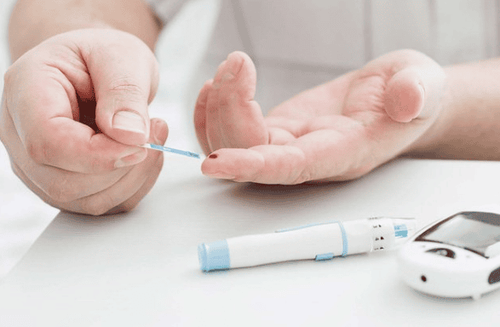This is an automatically translated article.
Date is the sweet, fleshy fruit of the date tree. This fruit is often sold as a dried fruit, which can be used directly or in ingredients for smoothies, desserts and many other dishes. Due to the naturally sweet taste of this fruit, dates can be a sensitive food for people with diabetes.
1. Why are dates a concern for diabetics?
Dates contain a lot of sweetness, even in a relatively small amount. This sweetness is a natural source of fructose, found in fruits. Each 24-gram dry date contains 67 calories and 18-gram carbs.
Blood sugar is a factor that should be closely controlled for people with diabetes. They are often recommended to limit the amount of starch and sugar consumed. Therefore, people with diabetes should consider when using dates.
Each leaf scrub contains nearly 2-grams of fiber, accounting for 2% of daily nutrition. This is a very important indicator because fiber helps the body to enforce the rate at which starch is absorbed. The slower the amount of starch you eat is digested, the more your blood sugar spikes after you eat it.

Chất xơ trong quả chà là khô giúp cơ thể cưỡng chế hấp thụ tinh bột
2. How do dates affect blood sugar?
The glycemic index (GI) is a measure of the impact of starch on blood sugar levels. This is measured on a scale of 0 to 100, with pure glucose (sugar) designated as 100 – the highest spike in blood sugar levels after eating a food.
Low blood sugar has a reading of 55 or less, a high GI is recorded at 77 or higher, and a stable GI is between 59 and 59. From there, foods have a low GI. will cause less appreciable fluctuations in blood sugar and insulin levels.
In contrast, a food with a high GI will raise blood sugar quickly. This can often lead to a blood sugar crash, especially in people with diabetes.
People with diabetes should generally use low GI food groups. This helps the patient in controlling blood sugar. In people with type 2 diabetes, sugar is more likely to build up in the blood and rise to dangerously high levels. Fortunately, despite their sharp sweetness, dates are a low GI fruit. Therefore, when eaten in moderation, dates belong to the group of products that are safe for people with diabetes.

Qủa chà là có chỉ số GI thấp nên khá an toàn cho người mắc bệnh tiểu đường
Another method to measure the effect of food groups on blood sugar is the glycemic load (GL). Unlike GI, GL is measured based on a specific serving.
To calculate the GL, multiply the GI by the starch content of the serving and divide it by 100. For example, 2 48-gram dried dates would have about 36-grams of starch along with just the fiber. A GI score of about 49 gives a GL score of about 18.
Low GL starch sources range from 1 to 10, foods with an average GL score of 11 to 19, and a GL score high is at 20 and above. So, a serving of about 2 dates has a safe level of GL.
People with diabetes are generally advised not to eat more than 1 or 2 dates at a time. Combining dates with a protein source - such as nuts - allows the starch in the fruit to be digested more slowly, helping to prevent blood sugar spikes.
Customers can directly go to Vinmec Health system nationwide to visit or contact the hotline here for support.
Reference article Healthline.com













